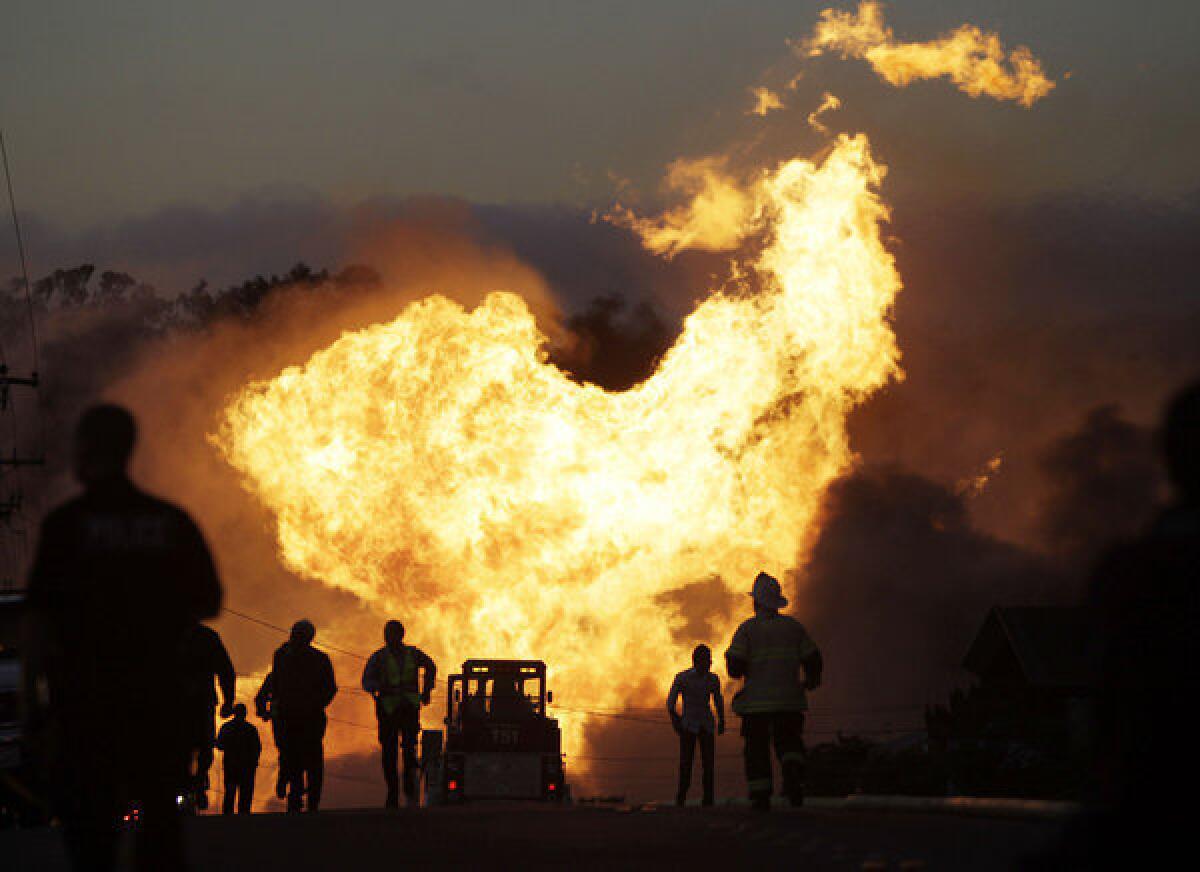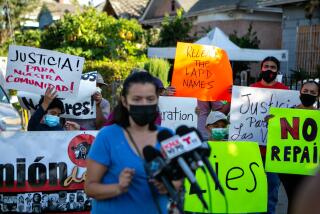Record $2.25-billion fine urged in deadly San Bruno blast

Utility giant Pacific Gas & Electric should pay a record $2.25-billion penalty for a 2010 natural gas explosion in San Bruno that killed eight people and devastated a neighborhood, regulators recommended Monday.
If approved by the California Public Utilities Commission, it would be by far the largest penalty even levied by the agency. The largest fine ever handed out by the PUC was $38 million against PG&E; for a 2008 natural gas explosion in Rancho Cordova.
A report released Monday by the commission’s Safety and Enforcement Division said its investigators found more than 100 violations by the company, some dating back decades. “Imposing a fine for each violation ... would result in tens of billions of dollars of fines, which is more than PG&E;’s net worth,” the report said.
Regulators said they agreed on the $2.25 billion “because PG&E; needs to retain its creditworthiness in order to be able to pay for its improvements in the safety of its facilities, as well as to procure natural gas and electric power.” The board also said the fine should be paid by PG&E; shareholders, not ratepayers.
It was the latest investigation taking PG&E; to task for the deadly explosion. The National Transportation Safety Board issued a scathing report blasting PG&E; for “baffling” mistakes and a “litany of failures.”
Investigators from that agency determined the blast was triggered by maintenance work at a PG&E; control center that caused electrical problems and a rise in gas pressure. Investigators also noted it took the gas company nearly 95 minutes to shut off the gas spewing from the broken pipeline. The NTSB also faulted state and federal regulators, including the PUC, for lax oversight of the utility.
PG&E; Chairman Tony Earley released a statement Monday afternoon saying the utility has already made significant safety improvements, including replacing 45 miles of pipelines. But, he added, future fixes could be threatened by a massive fine.
He said he understood “the desire to punish PG&E;” but that the proposed penalties “far exceed anything that I have seen in my 30 years in the industry and fail to appropriately account for the actions taken by the company.”
Experts agreed the fines would be historic but also noted that the San Bruno explosion was an extraordinary event.
“In the realm of pipeline fines, two and a quarter billion dollars is a huge number,” said Carl Weimer, executive director of the Pipeline Safety Trust. “It’s much bigger than what we’ve seen in other tragedies, although San Bruno was different than other tragedies .... I think the 2.25 billion sounds like the size of the message that needed to be sent.”
The September 2010 blast left dozens injured and 38 homes destroyed after a 54-year-old pipeline exploded underneath the suburb south of San Francisco. Gas-fueled flames leapt 1,000 feet into the air, along with chunks of asphalt and the pipeline itself. Some residents remembered smelling gas that Thursday evening, followed by rumbling they thought was an earthquake.
A gaping 30-foot-wide crater sat in the middle of the neighborhood, nearby houses reduced to skeletons. Nearly three years later, the area is still rebuilding.
The PUC board’s proposal came the same day the city of San Bruno and an advocacy group filed its own recommendations for fines and penalties.
San Bruno officials said PG&E; shareholders should be fined at least $1.25 billion that would go to the state’s general fund, in addition to $1 billion for safety improvements including automatic shut-off valves and an independent monitor “to make sure PG&E; is making its pipelines safer.”
San Bruno Mayor Jim Ruane said he and other city officials are concerned the PUC board’s proposal could allow PG&E; to avoid paying punitive damages to the state’s general fund. The money toward safety improvements is important, he said -- but something the gas company should already be doing. (The PUC board said the fine should be used “solely for safety purposes,” according to a statement.)
“The devil is in the details,” Ruane said, adding that the city “wanted something punitive out of this to really make them think about what they had done and what they will do in the future.”
City Manager Connie Jackson called the proposal “a little bit disconcerting.”
“There needs to be a penalty component of the resolution of these cases that recognizes the severity of what happened in San Bruno,” she said.
The gas company will file its own proposal later this month, a PG&E; spokeswoman confirmed. A final decision from the PUC is expected this summer.
In San Bruno, resident Bill Magoolaghan said he feels PG&E; should pay a hefty price for the blast. His pregnant wife and three young children were at home when the pipeline exploded -- they escaped, but their house was severely damaged.
The Magoolaghans rebuilt and were one of the first families to move back to the neighborhood. The children still have nightmares and remain in therapy, he said. Some of his neighbors have returned, others haven’t. Everyone is still coping, he said.
“I think the fine needs to fit the crime,” he said. “A 13-year-old girl right across the street died in her mother’s arms. … Somebody has to pay for everything that went wrong.”
More to Read
Sign up for Essential California
The most important California stories and recommendations in your inbox every morning.
You may occasionally receive promotional content from the Los Angeles Times.











